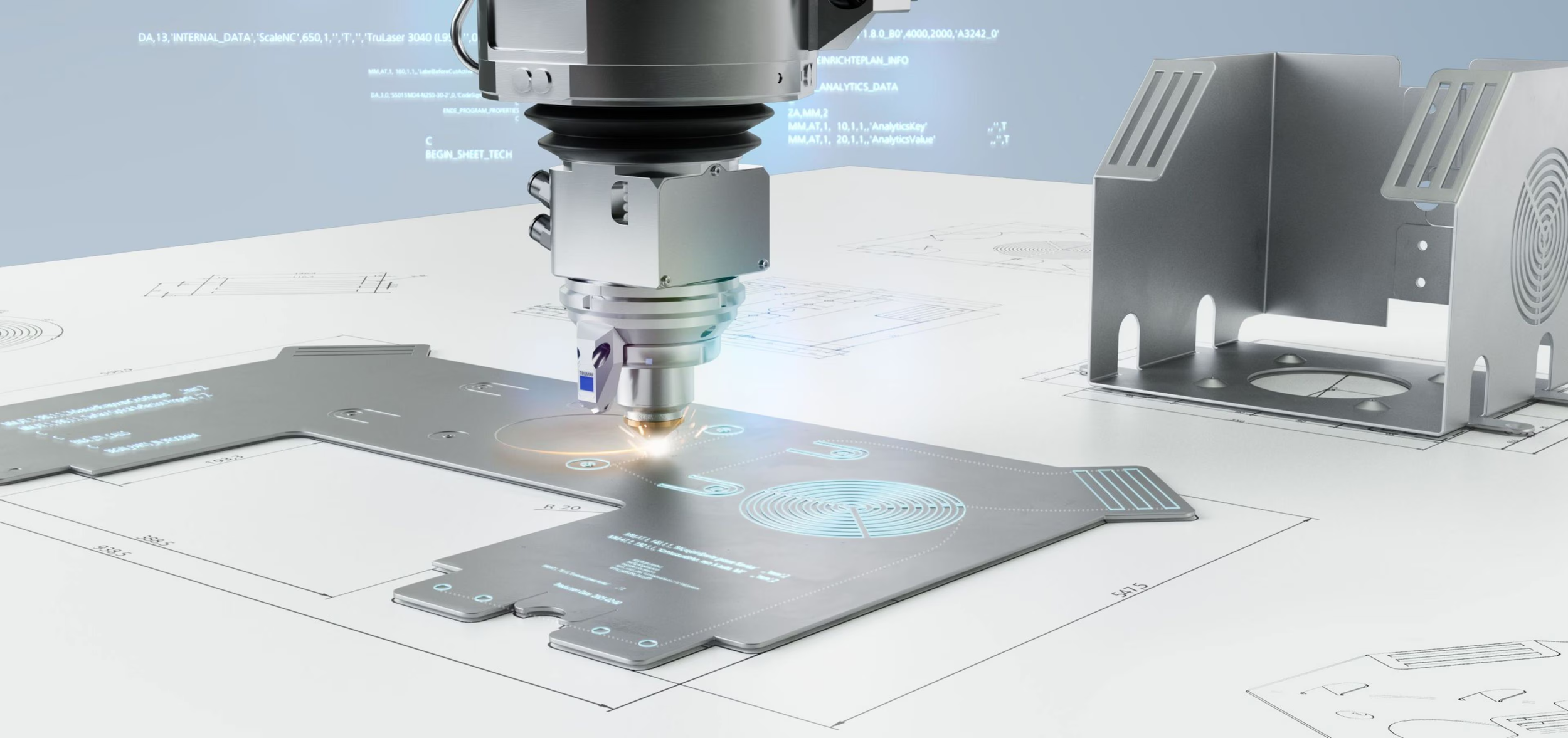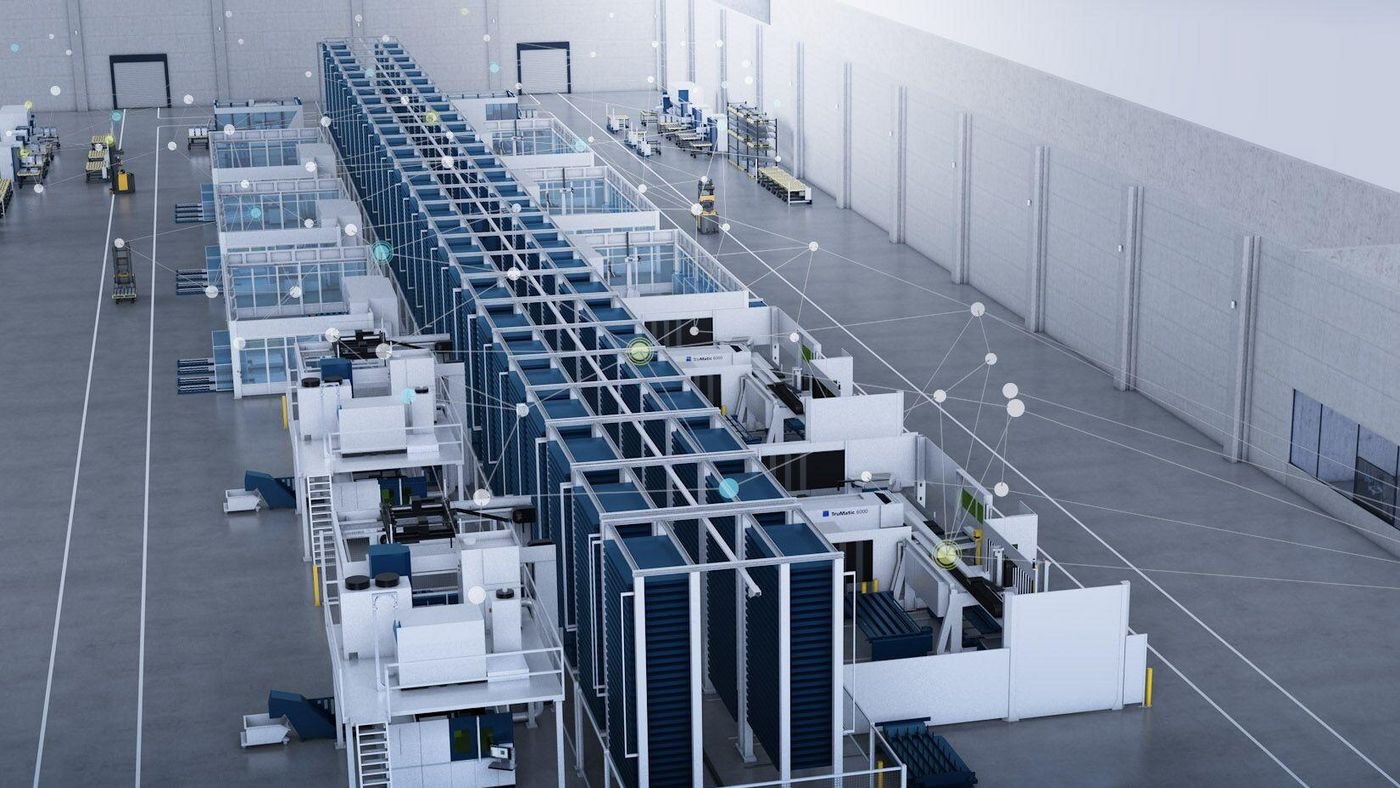Why Most Fabrication Job Shops Are 5 Years Behind & Don’t Know It
Most fabrication job shops think they’re keeping up. Maybe they’ve got a new ERP system, a recent press brake, a reliable team of operators. But walk into their facility, and it’s clear: many are still operating like it’s 2018. Parts stacked between departments. Machines waiting on operators. Work orders managed on clipboards.
Across the country, even profitable shops are unknowingly five years behind. The problem isn’t skill or effort. It’s that the entire industry has evolved faster than most shops have realized.
In this post, we’ll explore why so many job shops are lagging behind, the signs you might be stuck, and how companies working with Maintecx and TRUMPF are catching up through smarter equipment, connected automation, and leaner operations.
The Job Shop Has Changed But Many Shops Haven’t Kept Up
Five or ten years ago, most job shops operated under a steady, predictable model: large batch runs, separate machine departments, manual handling between cells, and little automation. Equipment was reliable, processes were familiar, and the margins worked.
But the market isn’t the same. Today’s customers expect shorter lead times, tighter tolerances, and the flexibility to handle both high-volume orders and one-off prototypes often in the same week. That shift has exposed the cracks in traditional setups.
The shops thriving in this environment look very different. They’re integrating machines, automating material flow, tightening changeovers, and connecting production data in real time. As TRUMPF defines it, a modern Smart Factory is one where people, machines, automation, and software work in harmony with the ability to adapt instantly to shifting demand.
Meanwhile, many shops are still running on equipment and workflows designed for a different era. Older CO₂ lasers, semi-manual press brakes, and stand-alone punch presses once felt advanced, but now they’re the bottlenecks.
Modern TRUMPF 2D laser cutting machines like the TruLaser Series 5000 can run lights-out, automatically loading, cutting, and stacking parts while operators move to higher-value work. Punching systems like the TruPunch 5000 form, tap, and cut in one setup.
The difference is compounding efficiency. Automated systems reduce scrap, improve energy use, and maintain consistent part quality. Shops still using older processes may not feel behind day-to-day, but they’re quietly losing hours of throughput and thousands of dollars in margin every month. In a high-mix, low-volume world, “good enough” equipment from five years ago no longer is.
Signs You’re Behind Without Realizing It
If your shop feels busy but profits haven’t improved or lead times keep slipping, there are a few red flags worth spotting early:
Frequent bottlenecks: Operators waiting on material, forklifts moving parts between stations, WIP sitting idle.
Legacy equipment: Older lasers, brakes, or punches with minimal automation or connectivity.
Layout inefficiencies: Machines arranged by department instead of continuous process flow.
Disconnected data: The ERP shows job status, but machines don’t report performance or downtime.
Growth strain: As batch sizes shrink and tolerances tighten, old workflows start to crack.
Recognizing these symptoms is the first step toward closing the gap. Most of them can be fixed faster and more affordably than you might think.
Resistance to Lean Manufacturing Principles
Even as lean manufacturing becomes standard practice, many job shops still cling to overstocked racks, long transport distances, and outdated workflows.
Lean is about cutting waste. Specifically, it targets seven areas: motion, waiting, transport, overproduction, inventory, defects, and overprocessing. When a laser sits 50 feet from a brake press, or pallets pile up waiting for inspection, those wastes multiply.
TRUMPF Smart Factory Consulting often finds that simply reorganizing machines into flow-based cells can boost capacity by 20–30%. For shops not ready for full automation, even small layout changes, paired with better scheduling and material staging, can unlock big gains without touching the ERP.
The Skilled Labor Crunch Is Getting Real
While technology races ahead, the labor force is shrinking. The average welder in the U.S. is now over 40, and younger workers often see manufacturing as “low-tech.” That perception hurts every small and mid-sized shop competing for talent.
Automation can help by amplifying people, not replacing them. A single operator running a TRUMPF automated bending cell or TruLaser Center 7030 can do the work that once required two or three employees on older manual setups.
By automating repetitive or precision-critical tasks, shops free up their skilled employees for programming, quality control, and continuous improvement: areas that drive long-term competitiveness and job satisfaction.
Disconnected Data & Underused Software
Ironically, many shops that did invest in ERP or MES systems still haven’t connected them to their floor. Job tracking happens digitally, but production still runs analog.
Without live machine feedback, managers rely on estimates instead of real data: “That batch should be done by lunch” instead of “Machine 3 is idle because of tool setup.”
TRUMPF’s Osean software and IoT connectivity allow live machine monitoring, automated job sequencing, and integration with ERP platforms, turning guesswork into visibility. But too many shops are still running blind, unable to see downtime trends, energy consumption, or part-per-hour performance. Until digital systems connect directly to physical equipment, the data revolution will keep passing them by.
Cultural Barriers: Comfort, Cost & Misconception
Beneath all the technical barriers is a deeper one: culture. Ask most shop owners why they haven’t modernized, and the answers sound familiar:
“We can’t afford automation yet.”
“Our guys won’t trust robots.”
“We’ve done it this way for 30 years and it works.”
Those mindsets are exactly why competitors leap ahead. The cost of not modernizing (i.e. lost time, rework, higher energy bills, labor inefficiency, etc.) quickly outweighs the investment in automation or new equipment.
As we said, stagnation is often the biggest risk in metal fabrication. Industry 4.0 is all about steady adaptation. Starting with one connected machine or one automation module can generate immediate, visible ROI.
How to Catch Up Without Starting Over
You don’t have to rebuild your entire plant to start closing the gap. Here’s a practical roadmap to modernise incrementally:
Conduct a floor audit: Map material flow, travel paths, machine utilisation, WIP movement and idle time.
Identify the biggest bottlenecks: It may be too many manual moves, excessive forklift travel, outdated machine zones or no automation in a key cell.
Choose one “cell” for upgrade: For example, grouping the laser, storage and bending into one automated line.
Invest in one smart machine or automation module: A TRUMPF laser with automation, or a TRUMPF punch press integrated with handling, can unlock big leaps.
Adopt lean habits: Implement 5S, preventive maintenance, and JIT staging to reduce downtime.
Invest in people: Train your operators on digital systems and upskill them for the machines of tomorrow.
Measure, adjust and scale: Track improvements in throughput, scrap, travel time, and then replicate what works.
Maintecx works alongside fabricators through this process, helping shops evolve at their own pace while avoiding costly missteps.
Don’t Just Modernize, Transform Your Advantage
If your shop floor still feels like it did five years ago, it’s falling behind. Technology, labor, and customer expectations have already moved forward.
But catching up doesn’t mean starting from scratch. With TRUMPF’s connected machines, automation modules, and Smart Factory software, paired with Maintecx’s local expertise, your shop can modernize with confidence and build a foundation for future growth.
The next five years will reward the shops that adapt fastest. Will yours be one of them? Explore TRUMPF Equipment with Maintecx.



